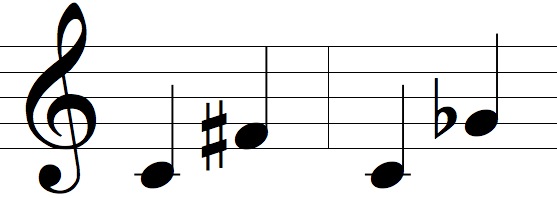In the next set of lessons, you will see a Tritone lit up on your instrument and you will write it in music notation.

Usually, when you write a tritone, one of the notes will be an accidental, and the other will be natural.

The only place that a Tritone naturally occurs is between the 4th and 7th degrees of the Major Scale.

In the key of C, this is between F and B.
Any other time you write a tritone, it will require an sharp or flat.

Tritones go by many names:
Flat 5
Diminished 5th
Sharp 4
Augmented 4th
The tritone is interesting because it exactly splits the octave into two equal parts.

An octave spans 12 semitones, and a Tritone spans 6 semitones.

Please press the Exercise button below.